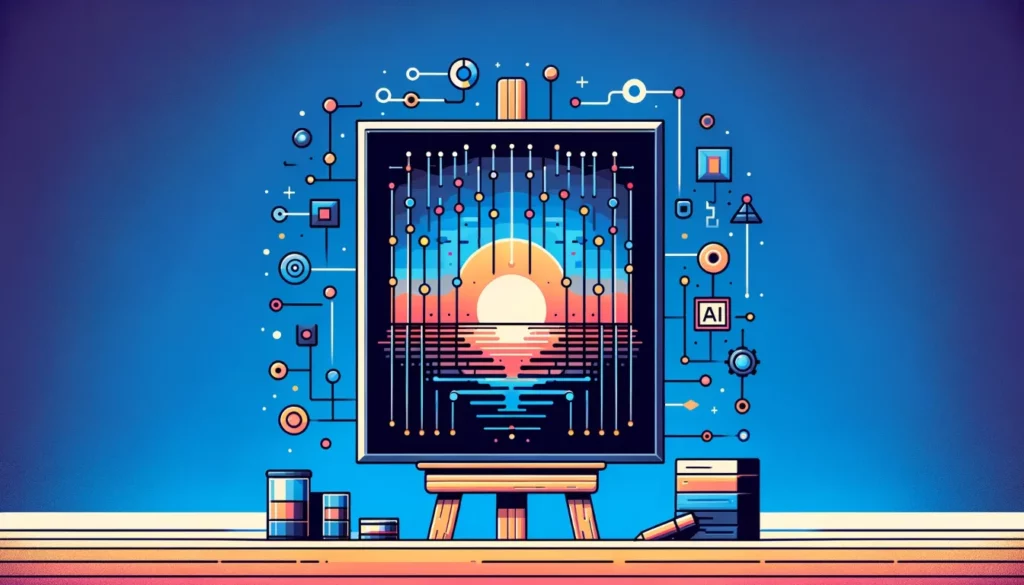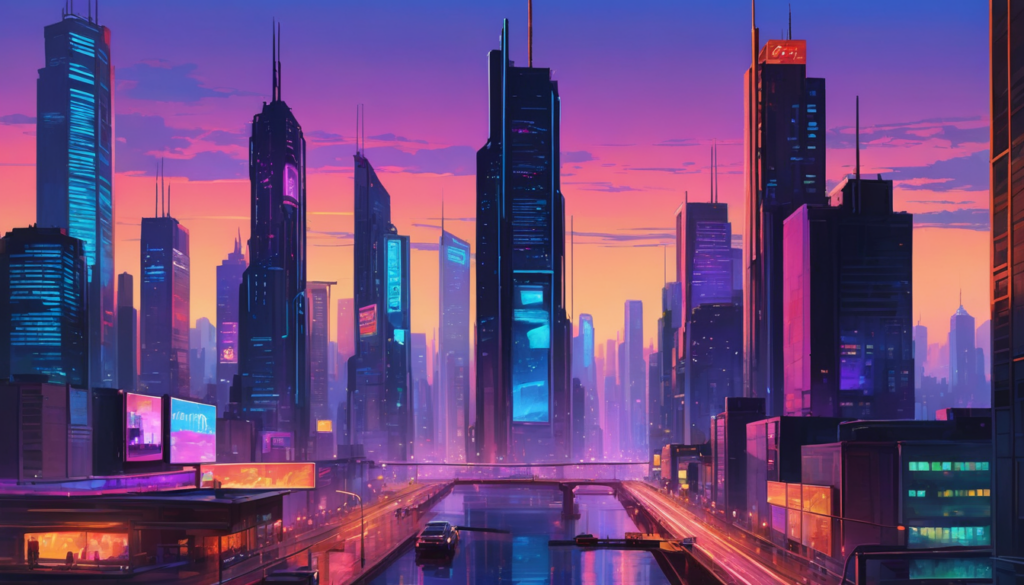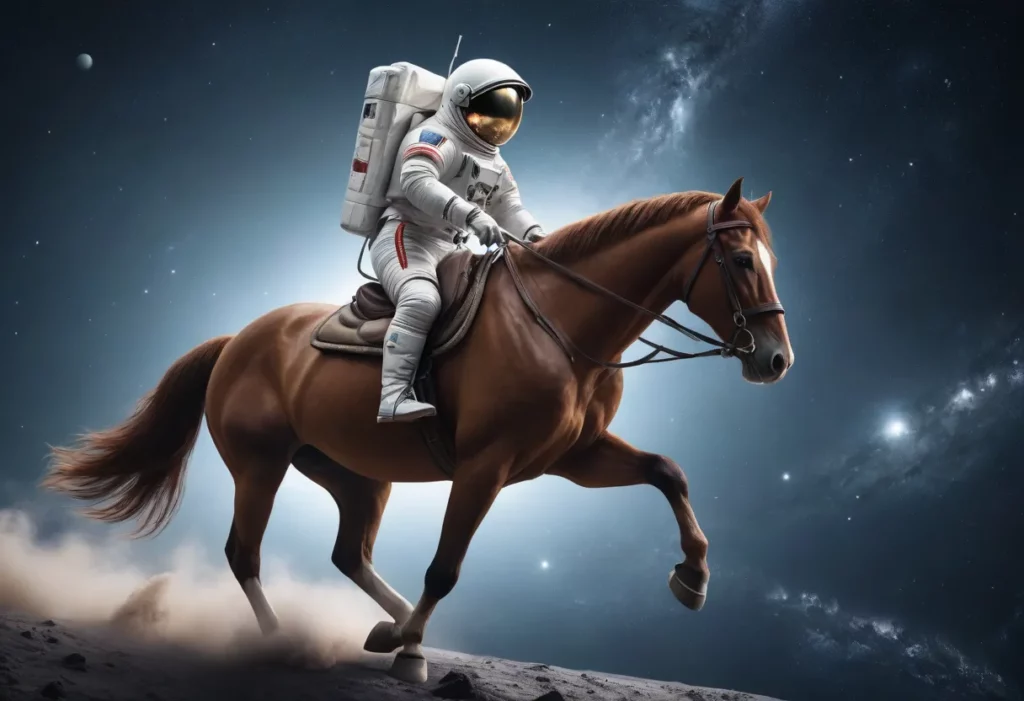This is a topic I find extremely interesting and is the direction that I plan to take this blog in moving forward. As such, I put together this introduction which will hopefully help explain the basic concepts and improve your understanding whether you are a beginner or someone who is looking to gain a deeper understanding of the process.
Generative AI is a type of artificial intelligence that specializes in creating new, original digital content. This can include anything from pictures and text to music.
Within this field, there’s a particular technique known as the image diffusion process, which has gained an enormous amount of popularity recently, and which I find fascinating.
We’ll explore these concepts step-by-step, ensuring they’re easy to understand for someone new to the topic.
Part 1: Understanding Generative AI
Generative AI is like a digital artist capable of creating new masterpieces. It doesn’t just copy; it innovates.
What is Generative AI?
- Definition: It’s a branch of AI that creates new content, whether images, texts, or sounds.
- How It’s Different: Unlike traditional AI that analyzes and sorts data, generative AI is about making something entirely new.
The Building Blocks of Generative AI:
- Data: Generative AI starts with data. Think of data as its inspiration or muse. The more diverse and rich the data, the more creative the AI can be.
- Neural Networks: These are like the AI’s brain. They’re complex algorithms that process data and learn from it. They mimic how our brains work, with layers of ‘neurons’ that analyze and interpret information.
Part 2: The Learning Process in Generative AI
Imagine generative AI as a student in a digital world, constantly learning and evolving.
How Does Generative AI Learn?
- Exposure to Data: It begins with exposure to a lot of data. For instance, to generate landscape images, it would study thousands of pictures of mountains, rivers, forests, etc. This is where much of the controversy comes in which we will discuss. Without a large dataset to study, the process wouldn’t work, and that dataset involves works that are already created by others.
- Identifying Patterns: The AI learns to recognize patterns – for example, how trees usually look, what colors are in a sunset, and so on.
- Improving Over Time: The AI keeps adjusting its approach based on its ‘experiences’ with the data. It’s like practicing a skill until you get really good at it.
Part 3: Exploring the Image Diffusion Process
Now, let’s focus on a special technique in generative AI: the image diffusion process. It’s a way to create images that starts with chaos and ends with clarity.
What is Image Diffusion?
- Starting with Chaos: Imagine starting with a messy, random splatter of paint. That’s how image diffusion begins – with digital noise.
- A Step-by-Step Journey: Over many steps, the AI transforms this chaos into a structured, clear image. It’s like slowly turning that splatter of paint into a detailed, beautiful painting.
Part 4: Detailed Walkthrough of Image Diffusion
Let’s break down the image diffusion process into detailed steps.
The Process of Creating an Image:
- The Beginning – Randomness: The process starts with what we call ‘noise‘ – a completely random set of pixels, like static on an old TV screen.
- Transformation: The AI then makes small changes to this noise, slowly shaping it into an image. Each change is a tiny step towards a complete picture.
- Guidance and Correction: The AI uses something called a ‘loss function’ to guide this process. This function tells the AI how close its current image is to what it should look like, helping it correct course.
- Learning by Doing the Opposite: Interestingly, the AI also learns by doing this process backward in training – starting with real images and gradually making them more chaotic. This helps it understand the path from chaos to clarity.
Part 5: Why Image Diffusion is Effective
Image diffusion is a powerful method for a few key reasons.
The Strengths of Image Diffusion:
- Creative Possibilities: This method allows the AI to create a wide variety of images. It’s not limited to what it has seen; it can create new, unique images.
- Controlled Yet Flexible: Despite starting with randomness, the AI’s adjustments are precise. This means it can be directed to create specific types of images.
Part 6: Practical Uses of Generative AI and Image Diffusion
Generative AI isn’t just a fascinating concept; it has real-world applications.
Where is Generative AI Used?
- Art and Creativity: Artists are using AI to create unique artworks. It’s like having a new type of paintbrush – one that can paint by itself using one’s imagination in place of a steady hand.
- Media and Entertainment: In movies and video games, AI can create realistic backgrounds or characters, making the impossible seem real.
- Understanding Complex Data: Scientists use AI to turn complex data into visuals, making it easier to understand patterns and insights.
Part 7: Challenges and Ethical Considerations
However, with great potential comes significant challenges.
The Challenges of Generative AI:
- Ethical Questions: There are debates about the use of AI in creating art. Who owns an AI-created artwork? Can AI be used to create misleading images?
- Quality and Bias in Data: The AI’s creations are only as good as the data it learns from. If the data is biased, the AI’s output will likely be biased too.
- Resource Needs: Creating high-quality images with AI requires a lot of computing power, which can be expensive and energy-intensive.
Part 8: The Future of Generative AI and Image Diffusion
The field of generative AI is rapidly advancing, and its future looks bright.
What’s Next for Generative AI?
- Technological Growth: As technology improves, so will the capabilities of generative AI. We can expect more detailed, realistic, and creative outputs.
- Broader Impact: The applications of generative AI are likely to expand, impacting more industries and aspects of our lives.
What Are Your Thoughts On Generative AI?
Generative AI, especially through the lens of the image diffusion process, is a groundbreaking blend of technology and creativity. It’s an area where AI is not just a tool for replication but a source of innovation, creating new forms of content that blur the lines between the digital and the real.
While some such as myself, think that this is a fascinating new technology, others are completely against it. And that is where I’d love to hear from you!
What are your thoughts on this topic? Let me know in the comments below!
Hi, I’m Carmine, the guy behind Helpful Tiger. Tired of crappy search results? Me too. That’s why I started this website. It’s a one-stop shop for simple tutorials and guides on a little bit of everything. Have questions? Reach out, and I’ll do my best to help!



